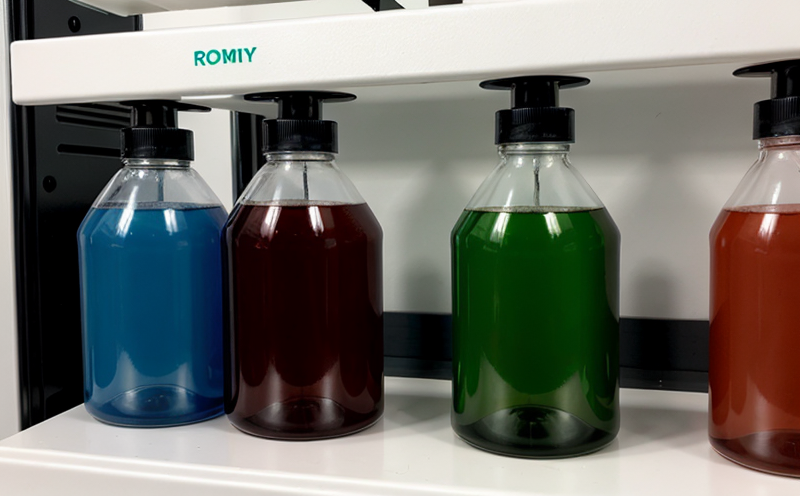ISO 4589 Reactivity Testing by Oxygen Index in Plastics
The oxygen index (OI) test, as specified in ISO 4589, is a critical analytical method used to determine the reactivity of polymers with respect to combustion. This test assesses how easily a polymer will burn under specific conditions and provides crucial data for material selection, quality assurance, and safety standards. The OI value indicates the minimum oxygen concentration necessary for a polymer to sustain combustion.
The procedure involves measuring the lowest percentage of oxygen in air at which a polymer sample remains continuously ignited when exposed to a standard flame source. This test is essential in various sectors such as automotive, aerospace, electronics, and building materials, where fire safety and material performance under thermal stress are paramount.
For plastics used in these industries, understanding the OI value helps in optimizing formulations for better flame retardancy without compromising mechanical properties. Additionally, this information is vital for regulatory compliance with standards like UL 94, IEC 60695-11, and others that mandate specific levels of flammability.
The ISO 4589 method ensures consistent testing across different laboratories by providing standardized procedures. This standardization is crucial in ensuring reliability and comparability of results between manufacturers and end-users globally.
Our laboratory adheres strictly to the ISO 4589 protocol, using state-of-the-art equipment and highly trained personnel to conduct these tests accurately. We provide detailed reports that include not only the OI value but also comparative data against industry benchmarks where applicable.
| Applied Standards | Description |
|---|---|
| ISO 4589:2013 | The latest edition of the ISO standard for oxygen index testing, providing clear guidelines and methodologies. |
| ASTM D635 Spec. Grav. | American Society for Testing Materials method to determine specific gravity, which is relevant for material density calculations in flame retardancy studies. |
The precision and accuracy of the ISO 4589 test are influenced by several factors including sample preparation, environmental conditions during testing, and the type of oxygen used. Proper handling of these variables ensures reliable results.
Understanding the OI value is important for predicting how a polymer will behave in real-world scenarios where it might be exposed to heat sources or open flames. It aids in selecting appropriate materials that meet safety requirements while ensuring product performance remains optimal.
In summary, ISO 4589 reactivity testing by oxygen index offers valuable insights into the flammability characteristics of polymers, contributing significantly to safer and more efficient designs across numerous industries.
Why It Matters
The significance of ISO 4589 reactivity testing by oxygen index in plastics cannot be overstated. In fire safety, the ability to control and predict how materials behave under heat stress is crucial for ensuring public safety. By determining the minimum oxygen concentration required for a polymer to sustain combustion, this test helps engineers design products that are both functional and safe.
For instance, in the automotive industry, knowing the OI value allows manufacturers to select appropriate fire-retardant materials for seat cushions or dashboard coverings without sacrificing durability. Similarly, electronics manufacturers can use this information to ensure their products comply with stringent flame retardancy standards set by regulatory bodies like UL and IEC.
In addition to enhancing safety measures, accurate oxygen index testing also contributes positively towards sustainability goals. By optimizing material formulations based on OI values, companies can reduce the amount of unnecessary additives used in production processes, thereby lowering environmental impact.
Moreover, compliance with international standards such as ISO 4589 ensures seamless trade between countries and regions, promoting global cooperation in product development. This consistency helps reduce barriers to market entry and fosters innovation across borders.
In conclusion, the importance of ISO 4589 reactivity testing by oxygen index lies in its ability to provide essential data that supports informed decision-making processes within various industries. It plays a vital role in safeguarding lives, protecting environments, and advancing technological advancements.
Applied Standards
| Standard Name | Description |
|---|---|
| ISO 4589:2013 | The latest edition of the ISO standard for oxygen index testing, providing clear guidelines and methodologies. |
| ASTM D635 Spec. Grav. | American Society for Testing Materials method to determine specific gravity, which is relevant for material density calculations in flame retardancy studies. |
| UL 94 | Underwriters Laboratories standard for flammability testing of plastics used in consumer products. |
| IEC 60695-11 | International Electrotechnical Commission standard for flame retardancy tests on electrical and electronic equipment. |
The combination of these standards ensures comprehensive coverage of the oxygen index testing process, providing a robust framework for accurate and reliable results. Compliance with such internationally recognized standards enhances credibility and reliability in the industry.
Industry Applications
- Automotive: Selecting fire-retardant materials for seat cushions or dashboard coverings.
- Aerospace: Ensuring compliance with strict flammability regulations to enhance safety standards.
- Electronics: Meeting stringent flame retardancy requirements set by regulatory bodies like UL and IEC.
- BUILDING MATERIALS: Determining appropriate fire-retardant additives in insulation materials.
The versatility of ISO 4589 reactivity testing by oxygen index makes it indispensable across multiple sectors, contributing to safer design practices and enhanced product performance. This standard supports continuous improvement in material science, ultimately leading to more robust and reliable products.





